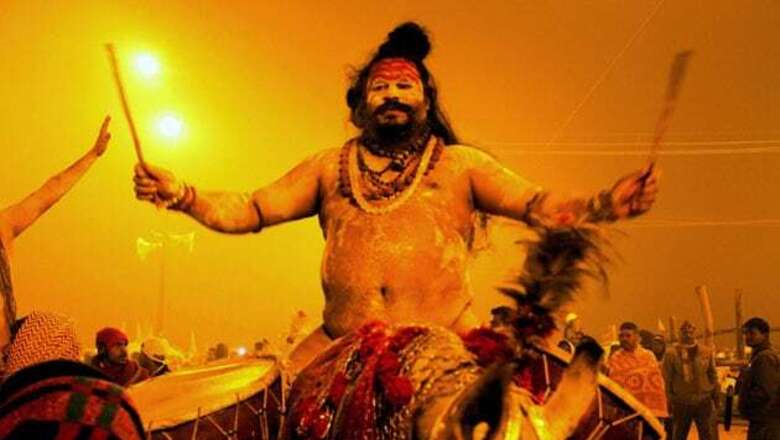
views
New York: The Maha Kumbh Mela, considered the largest public gathering in the world, will be the subject of a case study at Harvard University, which will study the logistics and economics behind it and the "pop-up mega-city"
that comes to life in Allahabad during the religious event. A team of faculty and students from Harvard's Faculty of Arts and Sciences (FAS), School of Design, Harvard Business School, School of Public Health, Harvard Medical School, Harvard Divinity School and Harvard Global Health Institute would travel to Allahabad for the project 'Mapping India's Kumbh Mela'.
They would undertake different researches at the Maha Kumbh, which draws millions of pilgrims from across the world every 12 years. Harvard said a temporary "pop-up mega-city" is created for the Kumbh Mela that would house pilgrims and tourists for the over month-long duration of the religious gathering. "This city, laid out on a grid, is constructed and deconstructed within a matter of weeks," it said.
Creating this huge encampment entails multiple aspects of contemporary urbanism, including city planning and management, engineering and spatial zoning, an electricity grid, water lines and sanitation systems, food and water distribution plans, hospitals and vaccination centres, police and fire stations, public gathering spaces, and stages for entertainments and plays, the university said. "This is probably the first time that Harvard is doing something like this, where we've pulled together...different disciplines in a way that all faculty and students are going to be together to look at a phenomenon," Associate Director of Harvard's South Asia Institute, Meena Hewett, said in a statement.
The Harvard team would seek answers to the "question of 'How on earth is an event of this size possible'," city-based writer Logan Plaster, who would be part of the team visiting the Kumbh Mela, said. "To fully grapple with this question, the scale of the Kumbh needs to be put in perspective". The Graduate School of Design team would study the Kumbh Mela as a case study for the "pop-up mega-city" and would map flows of people and infrastructure. The FAS team would look at various religious and cultural aspects of the event, including the kinds of religious groups present at the festival, devotional practices, tourism and environmental concerns, while the health team would study water quality, sanitation techniques, health clinic readiness and presence and networks of hospitals and public health facilities.
The team from Harvard Business School would gather information on business practices of the Kumbh, including the interaction of the public and private sectors and would also examine the way in which technology, media, internet connections and cellular networks play a role in this year's logistics as never before. Plaster said the scale of the gathering can be gauged by imagining the entire population of Shanghai about 23 million camping on a four-by-eight kilometer field, along with "the mass of humanity every last man, woman and child in New York City and you're getting closer to the Kumbh's expected attendance. But still not quite there."
He hoped that by studying a pop-up mega-city, researchers would learn lessons applicable to a wide range of mass gathering events, from refugee camps to festivals. "How do people move en masse? How can the spread of disease be kept in check using minimal technology? The questions aren't new, but by bringing four major disciplines under one tent literally Harvard is creating a new strain of dialogue, one which just might be able to keep up with the crush of the crowd," he said.
The "size and complexity" of the Kumbh Mela is inspirational for inter-disciplinary research in a number of complementary fields of urban studies and design, religious and cultural studies, environmental science and public health, technology and communications, Harvard said. The outcomes by each school's research team would be presented by students and faculty at a university-side symposium hosted by the South Asia Initiative in the spring semester 2013, and will be submitted for a final visual and textual publication. Plaster said the religious gathering caught Harvard's attention as it saw the Kumbh Mela as a "unique opportunity to study the formation and inner-workings of a pop-up mega city."
"Where recently there was nothing but a barren flood plain there will soon be a thriving 'city' complete with hospitals, sanitation systems, markets and police...The Kumbh has always operated in this capacity, but for a variety of reasons, the 2013 festival represents a significant shift towards seeing the festival as a seminal academic learning environment," he added. With the Maha Kumbh Mela taking place once every 12 years, the year 2013 marks the first Kumbh which would be criss-crossed with cell phone towers and where a critical mass of people would be using mobile phones.
"That environment creates a unique opportunity for researchers interested in studying big data. They'll be looking into questions like how anonymised cell phone data can assist in infectious disease mapping," Plaster said.




















Comments
0 comment